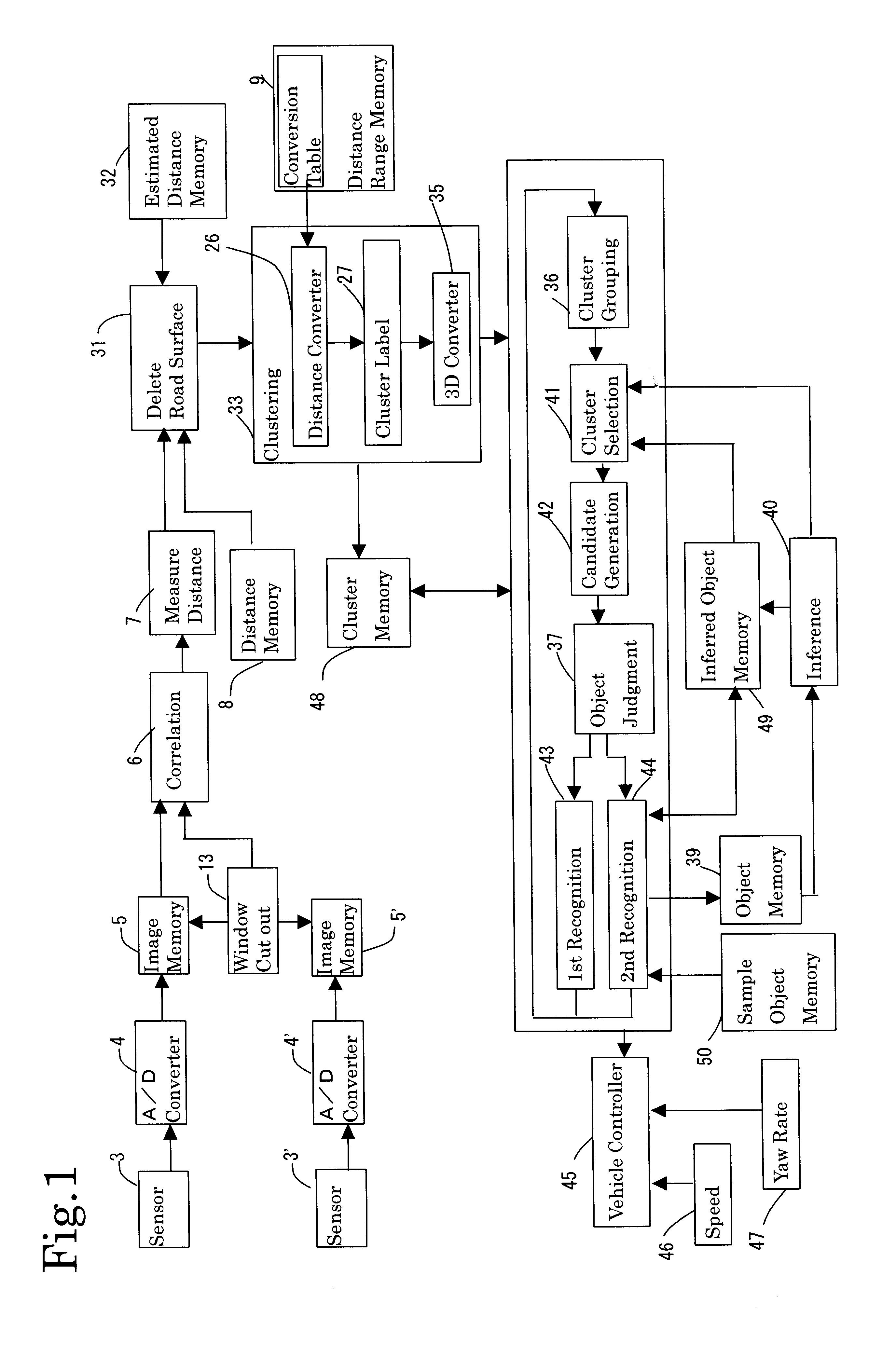Optical object recognition system
a technology of optical object recognition and optical object, which is applied in the field of optical object recognition system, can solve the problems of large amount of time required for determining whether or not distances are within a specified range, large error generation of distance values for respective windows as the distance becomes larger
- Summary
- Abstract
- Description
- Claims
- Application Information
AI Technical Summary
Benefits of technology
Problems solved by technology
Method used
Image
Examples
Embodiment Construction
The invention will now be described relative to preferred embodiments referring to attached figures. FIG. 1 is an overall block diagram of an object recognition system in accordance with one embodiment of the present invention. Other than the sensors 3 and 3′, all the blocks in FIG. 1 may be incorporated in a controller which comprises a single chip or multiple chip semiconductor integrated circuit. Thus, FIG. 1 shows functional blocks of the controller. Respective functions of the blocks are performed by executing respective programs stored in the ROM of the controller.
FIG. 2 is a diagram which indicates the distance measurement principle based on the triangulation method used in the present embodiment. First, a distance measurement method using a pair of image sensors will be described with reference to FIG. 2. A line sensor 21 and lens 23 constituting one of the abovementioned pair of image sensors are installed at a specified distance, i. e., at a distance equal to the base line...
PUM
 Login to View More
Login to View More Abstract
Description
Claims
Application Information
 Login to View More
Login to View More - R&D
- Intellectual Property
- Life Sciences
- Materials
- Tech Scout
- Unparalleled Data Quality
- Higher Quality Content
- 60% Fewer Hallucinations
Browse by: Latest US Patents, China's latest patents, Technical Efficacy Thesaurus, Application Domain, Technology Topic, Popular Technical Reports.
© 2025 PatSnap. All rights reserved.Legal|Privacy policy|Modern Slavery Act Transparency Statement|Sitemap|About US| Contact US: help@patsnap.com



